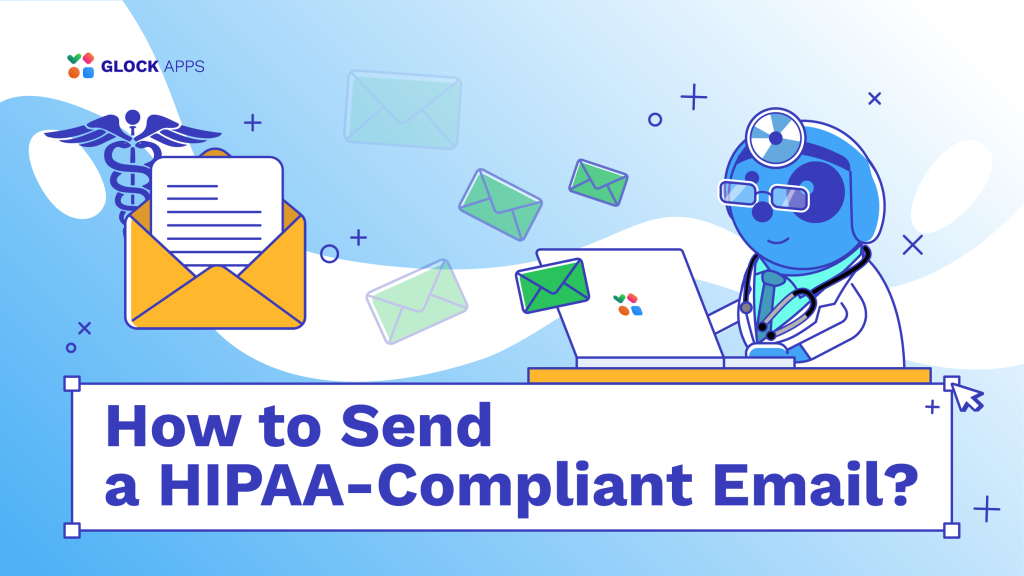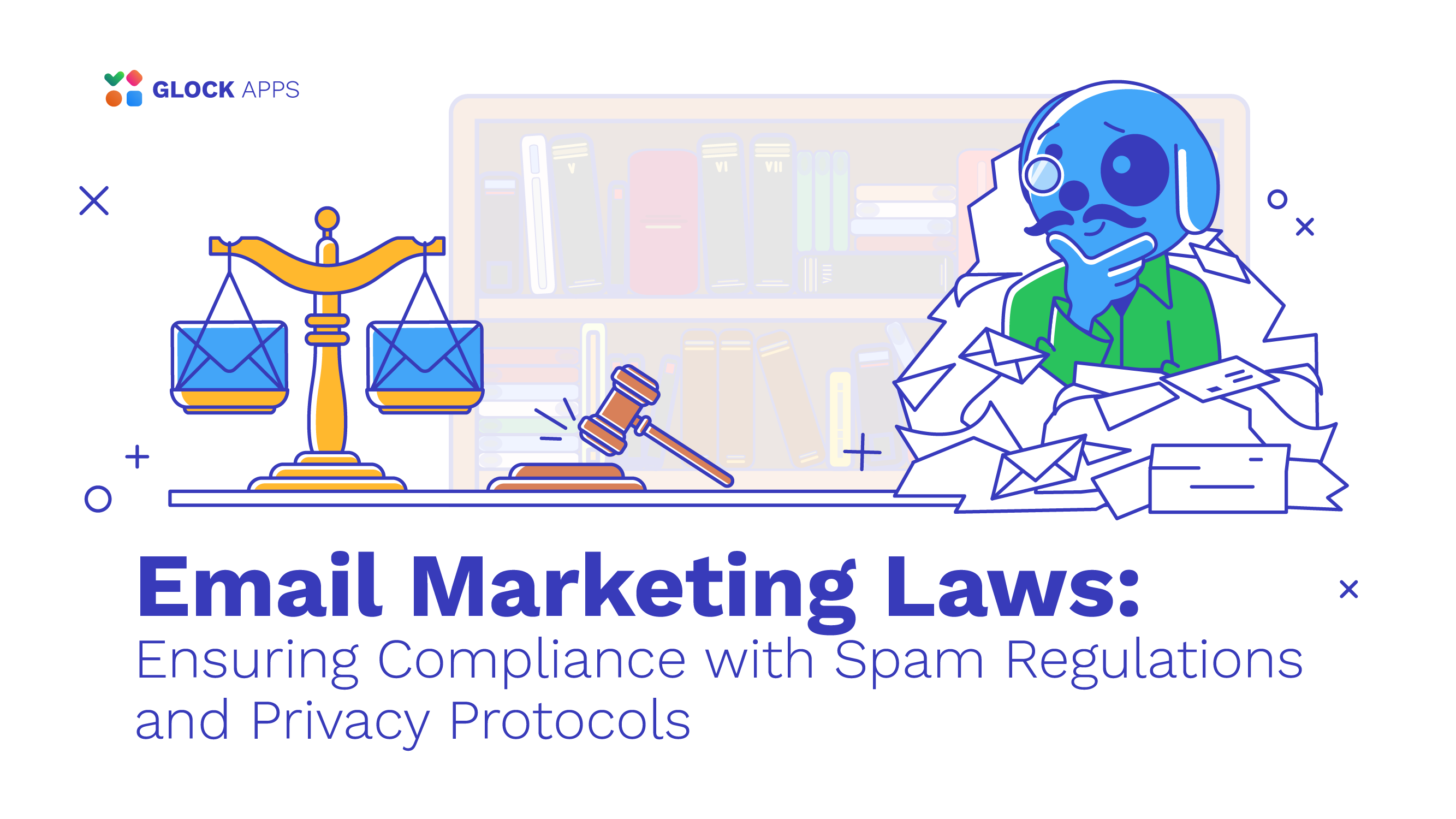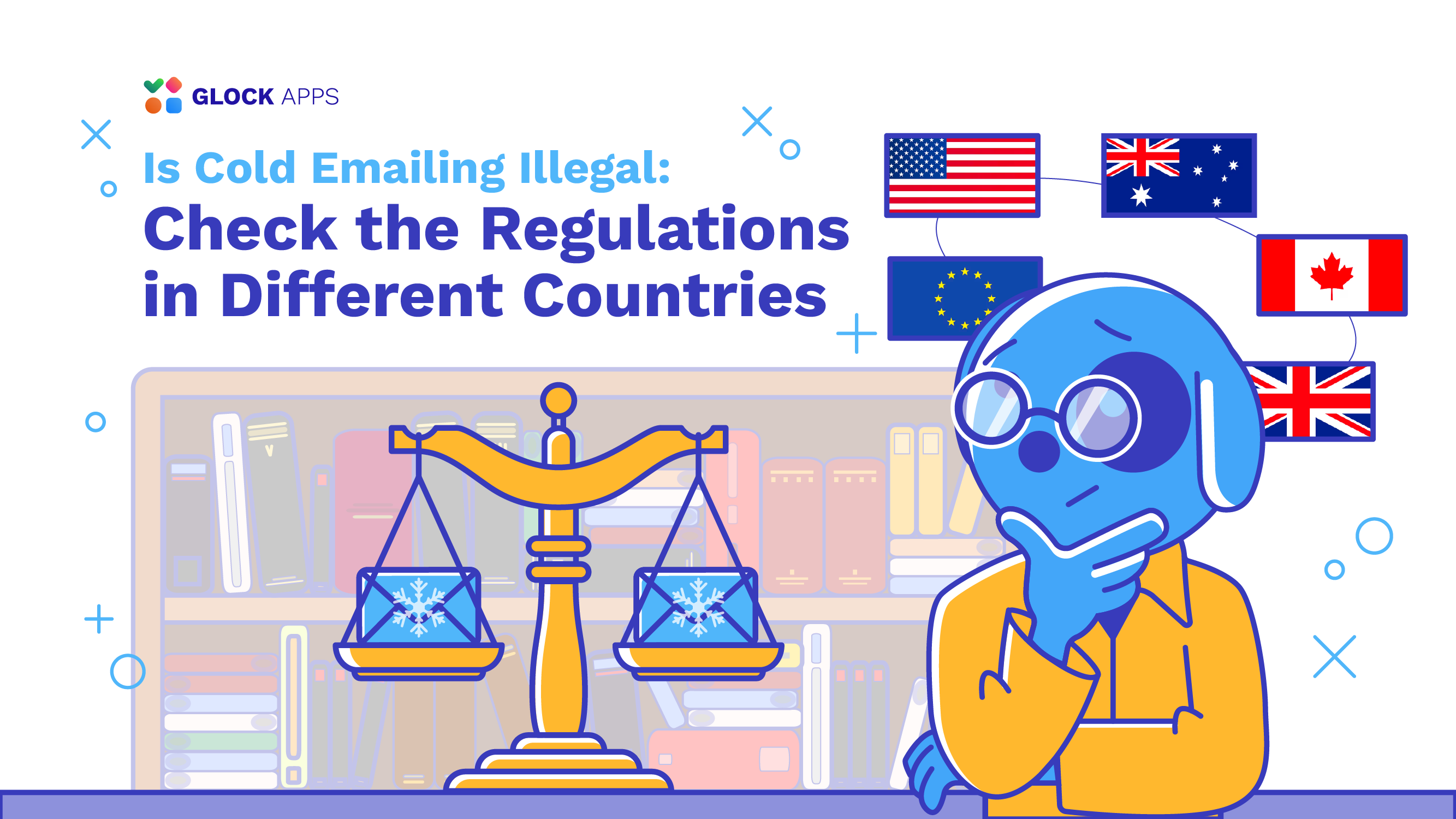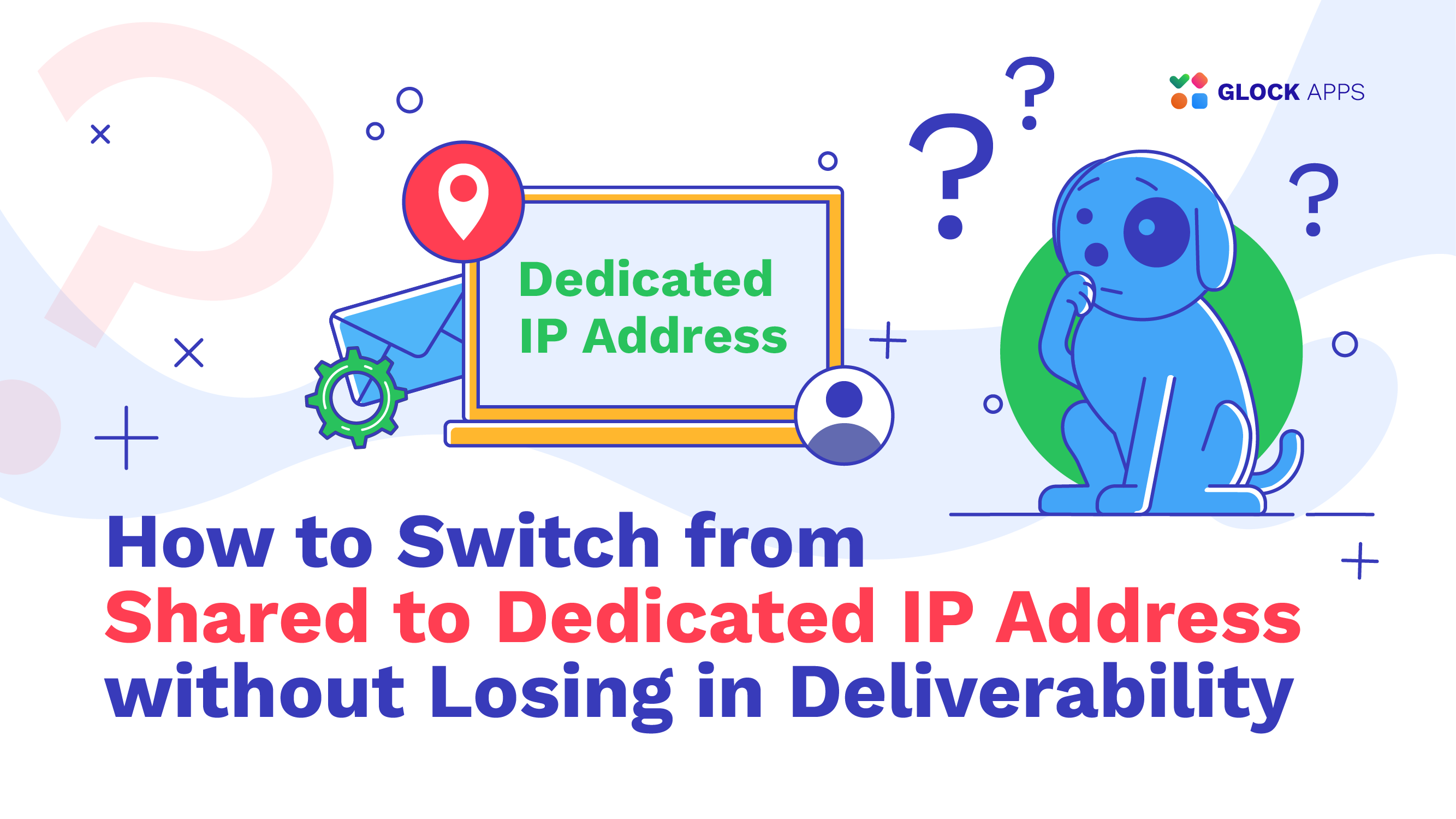How to Send a HIPAA-Compliant Email?

Estimated reading time: 12 minutes
Table of contents
- Relationship Between Email and Health Insurance
- When Do You Have to Comply with HIPAA Requirements for Emails?
- How Does HIPAA Relate to Emails?
- Email and HIPAA Compliance: Privacy Rule Overview
- What is Protected Health Information (PHI)?
- Is There a HIPAA Compliance Checklist?
- HIPAA’s Email Policy and The Privacy Rule
- Email Security Standards for Compliance with HIPAA
- How to Make Email HIPAA Compliant?
- HIPAA-Compliant Email Breach Notifications
- Is Email Marketing Compliant with HIPAA?
- Wrapping Up
- FAQ
Relationship Between Email and Health Insurance
You probably read the headline and thought, where is the connection between email and health insurance? But for real, their relationship is much closer than it might seem.
Recently, we looked in detail at the main laws of email marketing, and today we will move on to another set of rules that directly affect email marketers’ work and in a certain way limit their freedom of action.
As is known, in modern times health insurance companies often communicate with their members via email, sending important documents such as policy information, explanations of benefits, or coverage updates. And of course, these emails contain sensitive personal and medical information that is subject to HIPAA regulations, which are particularly relevant in the United States. Therefore, healthcare organizations must ensure that they handle email communications in a way that protects the privacy and security of their members’ information.
On the whole, HIPAA ensures that personal medical records and other health information are kept private and secure, limiting who can access them and how they can be used. This act also outlines rights regarding medical records, such as the right to access them and request corrections if needed. Overall, HIPAA aims to protect privacy and give people more control over their health information.
When Do You Have to Comply with HIPAA Requirements for Emails?
HIPAA, short for the Health Insurance Portability and Accountability Act, is a federal law designed to protect the privacy and security of health information exchanged between healthcare providers, hospitals, and health insurance organizations.
An email must be HIPAA-compliant if it contains protected health information (PHI) and is sent by a HIPAA-covered entity. Let’s dive deeper and discover what that means.
This law applies to healthcare providers, regardless of size, health insurance companies, IT staff, those responsible for purchasing or maintaining healthcare email solutions, and anyone else who handles health information electronically, known as covered entities.
There are two categories of entities that are required to comply with HIPAA: covered entities and their business associates.
Covered entities include healthcare providers, health insurance plans, and health information centers. Business associates are individuals who provide services to covered entities.
If you work with protected health information (PHI), compliance with HIPAA rules is mandatory, and any electronic communication containing PHI sent by a covered entity or business associate must also comply with HIPAA standards without exception.
Regarding exceptions to HIPAA rules, they include workforce members who are under the direct control of a Covered Entity or Business Associate, whether paid or unpaid. While they are not considered Business Associates, they are still required to adhere to relevant provisions through policies and procedures set by the Covered Entity or Business Associate.
In addition, if a health plan or healthcare provider does not qualify as a Covered Entity but provides services to or on behalf of an organization that does, they must comply with certain provisions outlined in a Business Associate Agreement.
How Does HIPAA Relate to Emails?
HIPAA relates to email primarily in terms of safeguarding the privacy and security of protected health information (PHI) transmitted electronically. This means that any emails containing PHI must adhere to HIPAA regulations to ensure patient confidentiality and data security.
HIPAA compliance standards for email are found across various sections of the HIPAA Administrative Simplification Regulations. These standards range from the general requirements and applicability outlined in Part 160 to the specific rules concerning privacy, security, and breach notifications detailed in Part 164.
Obviously, you will ask, what does this compliance mean? This involves implementing measures such as encryption, access controls, audit logs, and secure transmission protocols to protect sensitive information that is sent via email. And it’s clear that not complying with HIPAA rules regarding email can lead to fines and unpleasant legal consequences, so we recommend that you study all the nuances before starting to create your own campaigns.
Email and HIPAA Compliance: Privacy Rule Overview
We’ve put together a summary for you of the key elements of the Privacy Policy, including who it covers, what information is protected, and how protected health information can be used and disclosed. As this is a summary of the Privacy Policy, it does not address every detail of every provision and describes it generally.
HIPAA Transactions Rule clarifies that merely using electronic technology, like email, doesn’t automatically classify a healthcare provider as a covered entity under HIPAA. Instead, the transmission must be related to a standard transaction.
The Privacy Rule applies to healthcare providers regardless of whether they transmit these transactions electronically directly or through a third party like a billing service. Healthcare providers encompass institutional providers such as hospitals, as well as non-institutional providers like physicians and dentists, and any entity involved in providing, billing, or receiving payment for healthcare services.
What is Protected Health Information (PHI)?
It includes data that can identify an individual and is stored or sent by the entity or its business partner, for example, about a person’s health, health care they received, or payments for health care. This information contains common identifiers such as name, address, date of birth, and social security number. But certain records, such as employment records maintained by a health care provider as an employer, or education records under certain laws, are not considered PHI.
Is There a HIPAA Compliance Checklist?
It is important to be aware of your compliance responsibilities and those of your business associates, as ignorance of the requirements is known to be no defense against enforcement actions of a HIPAA violation.
While most enforcement actions do not result in civil monetary penalties, compliance with a corrective action plan (a typical violation resolution) can result in indirect costs and disruptions to your business processes. To determine if your organization is covered by HIPAA, there is a checklist to follow.
HIPAA’s Email Policy and The Privacy Rule
Many discussions about HIPAA compliance for email often emphasize the requirements of the Security Rule, but it is important to keep in mind compliance with the Privacy Rule. The Privacy Rule defines PHI under HIPAA and outlines the permissible uses and disclosures of PHI, which are key standards when developing HIPAA email policies for employees.
HIPAA email policies should be integrated into overall HIPAA training, not just security awareness training, given how often employees communicate via email. This step increases the overall level of compliance by making the staff more aware of the minimum required standards.
Other aspects of the Privacy Rule that impact HIPAA email compliance include the mandates of business associate agreements. While the requirements of the Privacy Rule specify what must be included in a Business Associate Agreement to ensure HIPAA compliance, the standards of the Security Rule only require that an Agreement be in place.
Email Security Standards for Compliance with HIPAA
HIPAA-compliant email security standards require the implementation of access controls, auditing, integrity controls, identity authentication, and transmission security measures. These policies are designed to limit access to PHI, monitor its transmission via email, maintain integrity, ensure accountability of messages, and protect this information in transition.
Additionally, if PHI is stored in emails, covered entities, and business associates must deploy an email archiving and retention system to facilitate rapid response to access requests and accounting for disclosures within the timeframes outlined in the Privacy Rule.
Maintaining ongoing compliance can be challenging, requiring significant IT resources and ongoing monitoring of PHI transmissions to ensure compliance with HIPAA’s email policy.
HIPAA Requirements for Email Encryption
Healthcare emails can be sent in the thousands, so mistakes are inevitable, which is why the safest way to avoid stress and HIPAA violations is to automatically encrypt everything.
To encrypt emails for HIPAA compliance, ensure messages are encrypted and decrypted according to NIST standards. AES encryption is recommended, often implemented in TLS, but simple TLS encryption may not suffice as it relies on opportunistic TLS, potentially leaving messages unencrypted if the recipient’s server lacks TLS support.
Implementing HIPAA-required encryption can be achieved through various methods:
1. Email infrastructure setup.
Suitable for large organizations with resources to establish and maintain secure hosting and infrastructure, which requires technical expertise and resources.
2. Avoid sending confidential information via email.
Utilize dedicated patient portals for storing protected health information electronically and send notifications via email containing secure links. Ideal if already using a patient portal software like Jane, Pabau, RXNT, Carepatron, Mend, Healee, My Clients Plus, etc.
3. Use an encrypted email service.
Opt for HIPAA-compliant email-sending providers offering standalone services or plugins for email clients, which we’ll cover in more detail in the next article.
How to Make Email HIPAA Compliant?
In trying to make your email HIPAA-compliant, here are some important points to focus on:
- Regardless of the method chosen, ensure staff are trained on HIPAA regulations and software usage to prevent human errors leading to violations.
- Do not delete emails too soon, as it is recommended that you retain electronic PHI for at least six years.
- Additionally, always sign business associate agreements (BAA) with third-party providers to define compliance responsibilities because they have constant access to ePHI. Without that BAA your messages are not compliant with HIPAA.
- Maintain comprehensive records of all communications for legal purposes and in case of data breaches, demonstrating compliance efforts.
HIPAA-Compliant Email Breach Notifications
Even when a covered entity or business associate has implemented all necessary security measures to maintain HIPAA compliance for email, it is still important to be aware of the breach notification requirements.
HIPAA requires that breach notifications be sent by first-class mail (not electronic) unless individuals have previously consented to electronic notifications. If someone consents to email notifications, their consent must expressly include email notifications. Failure to comply may result in a HIPAA violation.
Is Email Marketing Compliant with HIPAA?
Yes, but only a limited number of e-marketing platforms are HIPAA compliant. HIPAA compliance for e-marketing involves meeting two key requirements.
First, it is necessary to get patient consent to receive marketing emails, which is usually obtained through a Notice of Privacy Practices or during the initial client intake process. However, it is important to note that communications directly related to treatment or medical operations, such as appointment reminders, are not covered by this requirement.
Second, all marketing emails must be encrypted, so HIPAA-compliant platforms must be used to ensure encryption and compliance.
Wrapping Up
To clear up your doubts, it is better to go through the checklist and understand whether your company’s activities fall under HIPAA rules.
If so, ensuring the confidentiality of medical information your organization handles and other confidential data is of utmost importance.
When transferring ePHI, use secure hosting for your applications and ensure that all emails are encrypted according to NIST standards. Also, always sign BAAs with each third-party service you use. Provide regular training to your staff, keep up to date with changes in HIPAA regulations, and always maintain the confidentiality of communications with your patients.
Disclaimer:
Please note that this blog post is for informational purposes only and should not be construed as legal advice. We recommend that you contact a qualified specialist for professional assistance with your questions.
FAQ
HIPAA’s primary purpose is to protect the privacy and security of health information exchanged between healthcare providers, hospitals, and health insurance organizations. It limits who can access this information and how it can be used. Additionally, HIPAA gives individuals rights over their medical records and to request corrections if necessary.
HIPAA compliance for email means adherence to the applicable standards of the HIPAA Administrative Simplification Regulations, which are designed to protect the privacy of individually identifiable health information transmitted in an email and to maintain the email’s confidentiality, integrity, and availability. Complying with these standards does not guarantee that the content of an email will remain protected, but it does reduce the risk of inappropriate disclosure and breach of confidentiality of unsecured PHI.
Compliance with HIPAA requirements is necessary when an email contains protected health information (PHI) and is sent by a HIPAA-covered entity. It includes healthcare providers, health insurance companies, and health information centers. Business associates, or individuals who provide services to these covered entities, must also comply with HIPAA standards when handling PHI.
HIPAA relates to communications via email by requiring the safeguarding of protected health information (PHI) transmitted electronically. This means implementing measures such as encryption, access controls, audit logs, and secure transmission protocols to ensure patient confidentiality and data security.
It’s crucial to encrypt emails, as unencrypted emails sent from the sender to the recipient are in plain text format. During transmission, they “rest” on various servers and can be read by any man-in-the-middle technology, similar to how email filters read emails for spam. Encrypting emails prevents them from being read by unauthorized persons, which is the best way to maintain the confidentiality of PHI.
Yes, you need to sign a BAA with your email service provider because they have “persistent access” to ePHI, even when emails are encrypted. It’s important to note that not all email services are willing to sign a BAA. For instance, most free services require you to subscribe to a business email service before entering into a BAA.
In most states, consent is not required to send PHI by email to patients, though it is recommended. According to HHS guidance, if a patient provides their email address to a healthcare provider or initiates email communication, consent is implied. However, patients should be informed of the risks associated with emailing PHI, and this warning should be documented. In all other situations, explicit consent should be obtained before sending PHI by email.
There are several risks of transferring PHI via email, beyond the risk of interception of unencrypted emails. Emails sent to a patient could be seen by family members if the patient leaves their device unattended, or by colleagues if the email is sent to a work email address, for example. This could be considered a breach of privacy if consent was not obtained beforehand, depending on the email’s content.
Email can be considered HIPAA-compliant if all necessary safeguards are in place to ensure the confidentiality, integrity, and availability of PHI. This includes having a signed Business Associate Agreement with the email service provider and ensuring that workforce members are trained on email best practices to minimize the risk of misdirected emails. When communicating with a patient or plan member via email, it is best practice to obtain their written consent before sending PHI.
HIPAA email access and message accountability rules emerge in the Administrative and Technical Safeguards of the Security Rule. These cover but are not limited to unique user identifiers, login monitoring, access reporting, automatic logout, email encryption, backup/archiving, and the termination of accounts when a member of the workforce leaves.



